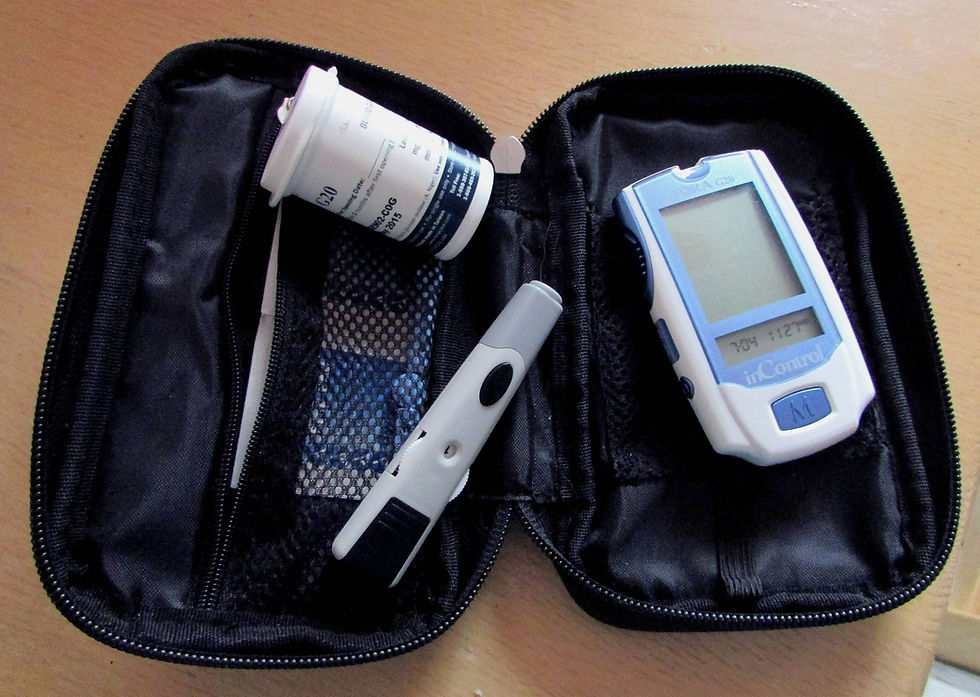Normal Isn’t Optimal: Functional Lab Ranges vs. Standard Lab Ranges Explained
- Erin Stimac
- Sep 22
- 5 min read

Your doctor tells you your labs look fine and they’ll see you again next year for your annual physical…
But you don’t feel “fine”. You’re like surviving….barely.
You start to wonder if this is just your new normal, or if something’s being missed.
Hold up my friend…spend a few minutes with me today and let me give you a little education session on labs, lab ranges, and the art and science of lab interpretation.
I’m going to keep this simple and actionable because there are way too many big words and way too much confusion that keeps us from taking action.
I’m here to change that.
Just because your labs are “normal” doesn’t mean you’re thriving. If you’ve ever been told “everything looks fine” but you don’t feel fine, you know exactly what I mean.
First, let’s talk about lab ranges…
Western Medicine vs. Functional Ranges: The Lab Range Divide
Western medicine lab ranges are designed to catch disease. They’re based on the average population, which we all know isn’t exactly the picture of health these days. If you’re just barely inside that “normal” range, you’re technically not diseased…but you’re probably not operating at your best either.
If average defines your health, and the average is unwell, should that really be your standard?
Take fasted glucose for example. A reading of 99 is “within range” for western medicine. Your doctor might just send you on your way. Tip above 100? You’re diagnosable “Pre-diabetic” with two tests showing that elevated marker.
That’s scary.
Type 2 diabetes is a lifestyle disease that’s completely preventable through lifestyle.
We can see this happening over time and we can catch it early. I see this all the time. With the right approach, we can turn things around before your health takes a hit—now and in the future.
THIS is what functional ranges are set out to do.
Functional lab ranges are tighter.
They’re based on what’s optimal for health, energy, and prevention—not just avoiding the diagnosis, the medication, or the hospital.
This is why you can have “normal” labs and still struggle with fatigue, stubborn weight gain, brain fog, or mood swings.
Western medicine lab ranges are designed to catch disease. Functional ranges are designed to optimize your health.
Let’s walk through a little example…
Your fasted glucose is 99. That’s “normal” by most labs (anything under 100 is considered okay), but functionally, we want to see it below 90 for optimal metabolic health. When your fasting glucose is sitting at the upper end of “normal,” you’re already on the edge. When it tips to 100 or above, Western medicine calls it “pre-diabetes.” But the truth is, your blood sugar has been creeping up long before that. If you want real energy and a metabolism that works for you, don’t settle for just being “not diabetic.” We need to aim for optimal blood sugar (and insulin) levels.
A fasting glucose of 99 is "within range." It's also a warning.

What All Do We Need to See?
Many times, clients come to me with labs from their doctor, and those labs don’t cover even a fraction of the information we need for a complete picture. Insurance usually covers the bare minimum, leaving a lot of stones unturned and a lot of questions unanswered. If you’re having symptoms and don’t feel your best, it’s worth digging deeper. You likely need and definitely deserve more than the basics.
The panel your insurance covers is not the whole picture.
A standard panel from your doctor might cover 28 markers (CBC, CMP, and a basic lipid panel). A functional panel covers 50–75 markers at a baseline, including essentials like insulin, vitamin D, ferritin, and inflammation markers most standard panels skip.
The Art & Science of Reading Labs
Reading labs isn’t just about seeing if a number is in range. It’s about understanding your story. This is an art & a science where any skilled practitioner will tell you that they never stop learning. Labs are one piece of a puzzle. The other pieces? Understanding your story, your symptoms, your goals.
Lab values on a page are just numbers until we put them in the context of your life and your goals.
At Erin Stimac Nutrition, we use labs as a tool. And I don’t look at a panel without planning to help someone on a deeper level.

A skilled practitioner doesn’t just circle the “abnormals” and call it a day. They connect the dots.
Maybe your B12 is “fine,” but you’re exhausted and your homocysteine is high—time to dig deeper. Maybe your total cholesterol is a little “high”, but your inflammation and triglycerides are low, your insulin is great, your HDL is ideal, and you feel good, yet your doctor is pushing statins with a hefty side effect profile-context matters.
We take into account symptoms, lifestyle, goals, and desires before we analyze labs on a deep level and make a plan for getting you back to thriving.
Context is Queen
You can take a lab panel and nitpick everything that’s not within a functional range, but that’s not the point. The real magic happens when we look at the whole person.
Sometimes one simple lifestyle shift like better sleep, more protein, or taking daily walks, can bring a bunch of out of range markers back into line-and the best part, you can FEEL better. It’s not about chasing every single abnormal or trying to supplement your way to a better panel.
It’s about the right actions, not just more actions.
It’s about finding the biggest needle-movers for you.
Don’t Settle for “Normal”
If you’re tired of being told “you’re fine” or your lab ranges are normal, keep in mind that is in the context of the lab range, not what is ideal for optimal health. These ranges are built around the average of the population that gets tested. In the US, that “average” is pretty concerning where over 70% of adults are overweight or obese, more than 1 in 3 adults has pre-diabetes, and nearly half of adults have some form of cardiovascular disease or high blood pressure.
“Normal” means fitting in with a population where chronic disease is the norm, not the exception. Normal doesn’t always mean healthy, and it definitely doesn’t mean optimal.
This is why it’s important to work with someone who treats you like a human, not just a lab result.
How This Shows Up in My Coaching Practice
When I review labs for my 1:1 clients, my goal isn’t to diagnose or treat disease, that’s your doctor’s role. I work alongside or you and your healthcare provider, not in place of them. As a functional nutritionist and coach,
I use lab data to spot patterns, support your health, and move you from 'getting by' to truly thriving.
I look at your habits, stress, sleep, and nutrition alongside your labs, so we can create a plan that’s tailored to you. My focus is on helping you move from “just getting by” to truly thriving.
Do You Always Need Labs?
Short answer: No.
You don’t need labs to start making changes and feeling better. If finances are tight, don’t let that stop you from taking action. The basics—nutrition, movement, sleep, stress management—move the needle for everyone, labs or not. However, most people have an HSA account accumulating funds. This can be used for labs and even in many cases for coaching with me!
But here’s the flip side:
Labs never hurt, and they often provide clarity and direction. Many times there’s something brewing under the surface that you’d never know without testing. Labs can bring clarity, speed up the process, and sometimes change the route we take. You’ll never regret having more information, but you also shouldn’t let the lack of labs be your excuse for staying stuck.

Ready to move beyond normal and get truly personalized answers? Let’s pull the right labs and build a plan that works for you. Schedule your free discovery call today and let’s get you on the path to feeling optimal!






Comments